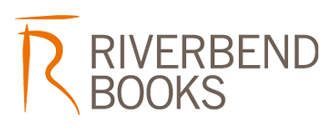The Loaded Dog
Author(s): Henry Lawson
"The Loaded Dog" is a short story by Henry Lawson. Henry Archibald Hertzberg Lawson (17 June 1867 - 2 September 1922) was an Australian writer and poet. Along with his contemporary Banjo Paterson, Lawson is among the best-known Australian poets and fiction writers of the colonial period and is often called Australia's "greatest short story writer." He was the son of the poet, publisher and feminist Louisa Lawson. Henry Lawson was born on the 17th of June 1867 in a town on the Grenfell goldfields of New South Wales. His father was Niels Hertzberg Larsen, a Norwegian-born miner from Tromoya near Arendal. Niels Larsen went to sea at 21 and arrived in Melbourne in 1855 to join the gold rush, along with partner William Henry John Slee. Lawson's parents met at the goldfields of Pipeclay (now Eurunderee New South Wales), Niels and Louisa Albury (1848-1920) married on 7 July 1866; he was 32 and she, 18. On Henry's birth, the family surname was Anglicised and Niels became Peter Lawson. The newly married couple were to have an unhappy marriage. Louisa, after family-raising, took a significant part in women's movements, and edited a women's paper called The Dawn (published May 1888 to July 1905). She also published her son's first volume, and around 1904 brought out a volume of her own, Dert and Do, a simple story of 18,000 words. In 1905 she collected and published her own verses, The Lonely Crossing and other Poems. Louisa likely had a strong influence on her son's literary work in its earliest days. Peter Lawson's grave (with headstone) is in the little private cemetery at Hartley Vale, New South Wales, a few minutes' walk behind what was Collitt's Inn. Lawson attended school at Eurunderee from 2 October 1876 but suffered an ear infection at around this time. It left him with partial deafness and by the age of fourteen he had lost his hearing entirely. However, his master John Tierney was kind and did all he could for Lawson, who was quite shy. Lawson later attended a Catholic school at Mudgee, New South Wales around 8 km away; the master there, Mr Kevan, would teach Lawson about poetry. Lawson was a keen reader of Dickens and Marryat and novels such as Robbery under Arms and For the Term of his Natural Life; an aunt had also given him a volume by Bret Harte. Reading became a major source of his education because, due to his deafness, he had trouble learning in the classroom. In 1883, after working on building jobs with his father in the Blue Mountains, Lawson joined his mother in Sydney at her request. Louisa was then living with Henry's sister and brother. At this time, Lawson was working during the day and studying at night for his matriculation in the hopes of receiving a university education. However, he failed his exams. At around 20 years of age Lawson went to the eye and ear hospital in Melbourne but nothing could be done for his deafness. In 1896, Lawson married Bertha Bredt Jr., daughter of Bertha Bredt, the prominent socialist. The marriage was ill-advised due to Lawson's alcohol addiction. They had two children, son Jim (Joseph) and daughter Bertha. However, the marriage ended very unhappily.
Product Information
General Fields
- :
- : CreateSpace
- : CreateSpace
- : 0.036
- : 09 September 2014
- : 198mm X 129mm X 2mm
- : United States
- : books
Special Fields
- : Henry Lawson
- : Paperback / softback
- : 28
- : black & white illustrations

